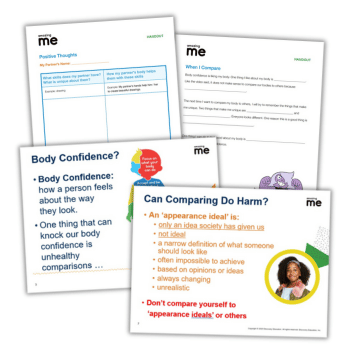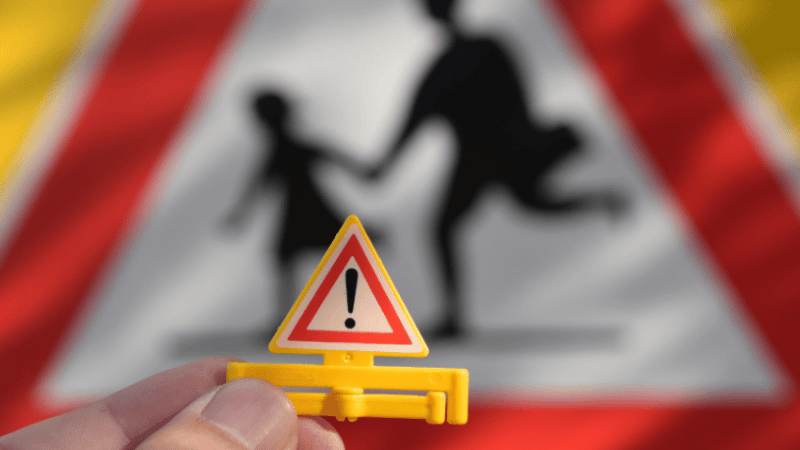How To Deal With Stress In Leadership

Former headteacher James Hilton ignored the warning signs of work-related stress until it was too late. Now he helps education professionals recognise and overcome the symptoms…

- by James Hilton

I was driving my new car up the M1 a few weeks ago when a warning light came on the dashboard. I didn’t recognise the symbol, but as it was amber and not red, I figured I could safely continue to the next junction a few miles away.
Once I’d come off and found somewhere to stop, I checked the manual to find out that it was a ‘low tyre pressure’ warning. I found a nearby petrol station, pumped up the tyre and continued on my journey.
Feeling the strain
Our bodies may not come with flashing lights, but they do give us warning signals as to our physical and mental wellbeing – and we would be wise to try to understand what those signs may mean. Sure, we can often carry on for a while, but if we ignore them altogether, we run the risk of our journey coming to a halt. Teaching can be one of the most rewarding jobs in the world, but it is also one of the most stressful. Resources are rapidly shrinking, while the pressure for improved results is relentless. Add into the mix constantly shifting goalposts and higher levels of accountability than ever before, and it’s inevitable that many teachers are feeling the strain. Sadly, many feel unable to talk openly about this, for fear of what others might think of them or because of how they might be judged by line managers, parents, their governing body or by Ofsted. Many just bottle things up and plough on regardless, but stress is insidious. It creeps up on a lot of people who fail to spot the warning signs.
I should know. I was one of those people. This is my story.
The downward spiral
In 2006 I was an experienced headteacher in my second headship at an exceptionally large and rapidly growing primary school in the East Midlands. I loved my school, but I began to find it difficult to keep all the plates spinning. I was struggling to be everywhere at once, and to make any impact on my mounting to-do list. Sleepless nights spent worrying took their toll. During autumn that year, matters seemed to intensify. I didn’t feel able to open up to other colleagues. I worked in a wonderful school, with well-behaved pupils and fantastic facilities – surely I should have been able to cope?
I gave up doing amateur dramatics and rarely wanted to socialise with friends, which with the benefit of hindsight was a mistake. Retreating into myself and creating a sense of isolation only made me feel worse. My physical health was deteriorating. Migraines were becoming a frequent occurrence. I had started becoming forgetful and had begun to experience regular lower-back pain. Some days I suffered from panic attacks at exactly the same roundabout halfway on the drive to work. Sat in a lay-by, I would then have to muster the courage to carry on the journey to school. Worst of all, I had developed a stammer that became very pronounced and was particularly embarrassing in meetings or when addressing large groups. These were the situations I dreaded. It’s hard to appear confident and in control of situations when you can’t get your sentences out.
Breaking down
Things had crept up on me – I didn’t realise how ill I’d become. I didn’t make any link between my different symptoms, even though looking back it was blindingly obvious they were all connected. When we’re under severe pressure, we often can’t see the wood for the trees. At the end of the following January, things came to a head. One Monday morning, just before leaving for school, my back went into uncontrollable spasms. I didn’t move from my lounge floor for over a week. My body had shut down.
When your car’s dashboard is lit up like a Christmas tree, you either need to pull over or run the significant risk of your vehicle breaking down.
I had broken down.
The road back
My GP prescribed medication to help me sleep and to stabilise my emotions, but I’d left it very late to seek help. He also suggested a course of cognitive behavioural therapy (CBT) to aid my recovery, but I was too ill to even embark on that for another six weeks. The therapy was actually very helpful. The appointments gave some structure to my weeks off work. I worked with a fantastic mental health therapist called Chris Roome, who has since acted as medical consultant on my book. I took up painting to pass the time, which was therapeutic, but would only paint from photographs, since I’d only rarely venture out of the house due to an irrational fear of being seen.
When I had to go out to walk the dog, I’d wear a woolly hat and my reading glasses. I wouldn’t shop anywhere within a 15-mile radius of school, in case I bumped into a parent who might think, ‘What’s he doing out? He’s supposed to be ill!‘ At one point friend took me to see the Simon Pegg comedy Hot Fuzz. Having removed my disguise in the darkened cinema, I started to immerse myself in the film and actually found myself laughing for the first time in months. It was as if someone had opened the shutters and let in the light.
But then on the way home I started to feel guilty for having enjoyed myself and the shutters abruptly closed once again. Progress came in small measures. It was often a case of two steps forward, one step back.
More self-aware
It took me three months before I started to believe that I return to work, and a further two more before I felt able to begin a phased return. It was as if I’d developed a phobia – and the best way to treat those is through graduated exposure to the thing that you fear. The governors put arrangements in place that allowed me to share the running of the school with my assistant head for a time. Without that support, I don’t think I would ever have made a successful return. But in the end I did return to work – far more self-aware than before, and now armed with strategies to help. I’m not going to pretend that all my issues from before went away, but I’m proud of the fact that I was able to continue the job I loved, in a community I cared about. After five more years of successful headship I decided to tell my story in the hope that it helps others. You see, at the time, I thought I was the only one not coping – which turned out not to have been true. Through the work that I do now, I know that many people struggle at times. It’s just very hard to talk about it. I’ve since interviewed many teachers, past and present, and have come to realise that while we all have different tolerance levels for stress, we all have a tipping point. Once we go beyond that, we’re likely to have an adverse physical or mental reaction to the pressure we’re under.
The trick is being able to spot the warning signs, and to proactively equip ourselves with coping strategies so that we can avoid ever getting to that point. We need to spot the signs that we’re speeding off the end of bridge, and learn how to react to them.
An anxious weight
How to give yourself time to reflect and on your worries in order to overcome them…
We all get stressed at work sometimes, but when the daily stressors cause you to feel, scared or panic, then it’s time to act.
• It’s hard to be objective when you’re experiencing fear, or anxiety. Take time out so that you can physically calm down. Take a walk or make a cup of tea.
• Define your worries. Write them down and be specific – avoiding lumping things together.
• Find perspective. Without catastrophising, consider what might be the worst that might happen. Examples might include, ‘Is it life threatening?’ or ‘Am I going to lose my job over this?’. Then consider, ‘What might be another way of looking at this?’ • The more emotionally involved we are in a situation, the harder it is to maintain perspective. There is much to be said for the saying ‘A problem shared is a problem halved.’ Talk to a trusted supporter and gain his or her dispassionate view. You don’t have to face things alone.
• Hard though it is, you need to expose yourself to your anxiety. Avoidance will only make your anxiety build over time. The more often you can expose yourself to your anxiety, the easier it will become to cope with it. Whilst elements of the situation may be unpredictable, remind yourself that you do have control of how you choose to respond. Control the controllable.
• Anticipation is often worse than reality. Remind yourself of all the times when things worked out better than you expected.
• Be kind to yourself. You don’t have to be perfect. Unrealistic self-expectations are likely to cause you to be anxious.
• Accept that you will have bad days – but a bad day does not mean you have to have a bad week. The aim here is to train our minds to cope with panic. Developing strategies to cope with anxiety helps to take away the fear of fear itself.
• Remember that courage is not the absence of fear, but taking action in spite of fear.
Leading From the Edge: A School Leaders’ Guide to recognising and Overcoming Stress is available now from Bloomsbury Education; To find out more about James’ work visit jameshilton.org.uk or follow @jameshilton300










